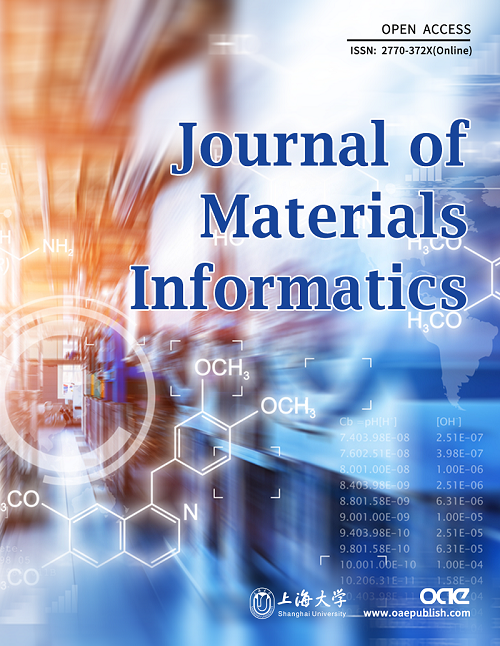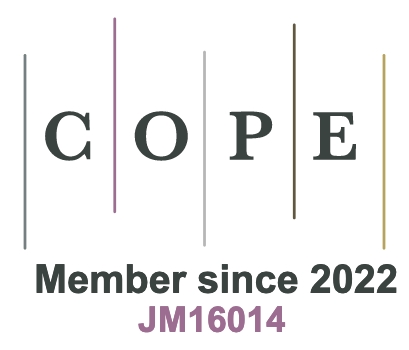REFERENCES
1. Velty A, Corma A. Advanced zeolite and ordered mesoporous silica-based catalysts for the conversion of CO2 to chemicals and fuels. Chem Soc Rev 2023;52:1773-946.
2. Sifat NS, Haseli Y. A critical review of CO2 capture technologies and prospects for clean power generation. Energies 2019;12:4143.
3. Usman M, Iqbal N, Noor T, et al. Advanced strategies in metal-organic frameworks for CO2 capture and separation. Chem Rec 2022;22:e202100230.
4. Madejski P, Chmiel K, Subramanian N, Kuś T. Methods and techniques for CO2 capture: review of potential solutions and applications in modern energy technologies. Energies 2022;15:887.
5. Tomaszewski R. Citations to chemical resources in scholarly articles: CRC handbook of chemistry and physics and the merck index. Scientometrics 2017;112:1865-79.
6. Wang H, Yin Y, Bai J, Wang S. Multi-factor study of the effects of a trace amount of water vapor on low concentration CO2 capture by 5A zeolite particles†. RSC Adv 2020;10:6503-11.
7. Jia T, Gu Y, Li F. Progress and potential of metal-organic frameworks (MOFs) for gas storage and separation: a review. J Environ Chem Eng 2022;10:108300.
8. Zhao M, Yang Y, Gu XS. MOF based CO2 capture: adsorption and membrane separation. Inorg Chem Commun 2023;152:110722.
9. Osman AI, Hefny M, Abdel Maksoud MIA, Elgarahy AM, Rooney DW. Recent advances in carbon capture storage and utilisation technologies: a review. Environ Chem Lett 2021;19:797-849.
10. Cheung O, Liu Q, Bacsik Z, Hedin N. Silicoaluminophosphates as CO2 sorbents. Microporous Mesoporous Mater 2012;156:90-6.
11. Li Y, Chen H, Wang C, et al. Achieving highly selective CO2 adsorption on SAPO-35 zeolites by template-modulating the framework silicon content†. Chem Sci 2022;13:5687-92.
12. Sun M, Gu Q, Hanif A, Wang T, Shang J. Transition metal cation-exchanged SSZ-13 zeolites for CO2 capture and separation from N2. J Chem Eng 2019;370:1450-8.
13. Gu Y, Liu Z, Yu C, et al. Zeolite adsorption isotherms predicted by pore channel and local environment descriptors: feature learning on DFT binding strength. J Phys Chem C 2020;124:9314-28.
14. Fu D, Park Y, Davis ME. Zinc containing small-pore zeolites for capture of low concentration carbon dioxide. Angew Chem Int Ed Engl 2022;61:e202112916.
15. Gu Y, Zhu Q, Liu Z, et al. Nitrogen reduction reaction energy and pathways in metal-zeolites: deep learning and explainable machine learning with local acidity and hydrogen bonding features. J Mater Chem A 2022;10:14976-88.
16. Zhu Q, Gu Y, Liang X, Wang X, Ma J. A machine learning model to predict CO2 reduction reactivity and products transferred from metal-zeolites. ACS Catal 2022;12:12336-48.
17. Choi HJ, Min JG, Ahn SH, et al. Framework flexibility-driven CO2 adsorption on a zeolite†. Mater Horiz 2020;7:1528-32.
18. Moliner M, Román-Leshkov Y, Corma A. Machine learning applied to zeolite synthesis: the missing link for realizing high-throughput discovery. Acc Chem Res 2019;52:2971-80.
19. Wu LM, Li XY, Xie FM, Zhong DL, Englezos P, Yan J. Minireview of hydrate-based CO2 separation from a CO2/CH4 gas mixture: progress and outlook. Energy Fuels 2022;36:10478-88.
20. Yuan Y, You H, Ricardez-sandoval L. Recent advances on first-principles modeling for the design of materials in CO2 capture technologies. Chin J Cheml Eng 2019;27:1554-65.
21. Schwalbe-Koda D, Kwon S, Paris C, et al. A priori control of zeolite phase competition and intergrowth with high-throughput simulations. Science 2021;374:308-15.
22. Zhang H, Thanh HV, Rahimi M, et al. Improving predictions of shale wettability using advanced machine learning techniques and nature-inspired methods: implications for carbon capture utilization and storage. Sci Total Environ 2023;877:162944.
23. Wang S, Li Y, Dai S, Jiang DE. Prediction by convolutional neural networks of CO2/N2 selectivity in porous carbons from N2 adsorption isotherm at 77 K. Angew Chem Int Ed Engl 2020;59:19645-8.
24. Srinivasu K, Natarajan S, Ghanty TK. Confinement directed adsorption of noble gases (Xe/Kr) in MFM-300(M)-based metal-organic framework materials. J Phys Chem C 2019;123:27531-41.
25. Baerlocher C, McCusker LB. Database of zeolite structures. Available from: http://www.iza-structure.org/databases/. [Last accessed on 4 Sep 2023].
26. Cai X, Gharagheizi F, Bingel LW, Shade D, Walton KS, Sholl DS. A collection of more than 900 gas mixture adsorption experiments in porous materials from literature meta-analysis. Ind Eng Chem Res 2021;60:639-51.
27. Vandevondele J, Krack M, Mohamed F, Parrinello M, Chassaing T, Hutter J. Quickstep: fast and accurate density functional calculations using a mixed Gaussian and plane waves approach. Comput Phys Commun 2005;167:103-28.
28. Grimme S, Antony J, Ehrlich S, Krieg H. A consistent and accurate ab initio parametrization of density functional dispersion correction (DFT-D) for the 94 elements H-Pu. J Chem Phys 2010;132:154104.
29. Goedecker S, Teter M, Hutter J. Separable dual-space Gaussian pseudopotentials. Phys Rev B Condens Matter 1996;54:1703-10.
30. Hartwigsen C, Goedecker S, Hutter J. Relativistic separable dual-space Gaussian pseudopotentials from H to Rn. Phys Rev B 1998;58:3641-62.
31. VandeVondele J, Hutter J. Gaussian basis sets for accurate calculations on molecular systems in gas and condensed phases. J Chem Phys 2007;127:114105.
32. Broyden CG. The convergence of single-rank quasi-Newton methods. Math Comput 1970;24:365-82. Available from: https://www.ams.org/journals/mcom/1970-24-110/S0025-5718-1970-0279993-0/S0025-5718-1970-0279993-0.pdf. [Last accessed on 4 Sep 2023]
33. Shanno DF. Conditioning of quasi-Newton methods for function minimization. Math Comput 1970;24:647-56. Available from: https://www.ams.org/journals/mcom/1970-24-111/S0025-5718-1970-0274029-X/S0025-5718-1970-0274029-X.pdf. [Last accessed on 4 Sep 2023]
34. Kresse G, Furthmüller J. Efficiency of ab-initio total energy calculations for metals and semiconductors using a plane-wave basis set. Comput Mater Sci 1996;6:15-50.
36. Perdew JP, Burke K, Ernzerhof M. Generalized gradient approximation made simple. Phys Rev Lett 1996;77:3865-8.
37. Grimme S, Ehrlich S, Goerigk L. Effect of the damping function in dispersion corrected density functional theory. J Comput Chem 2011;32:1456-65.
38. Pedregosa F, Varoquaux G, Gramfort A, Michel V, Thirion B. Scikit-learn: machine learning in python. J Mach Learn Res 2011;12:2825-30. Available from: https://www.jmlr.org/papers/volume12/pedregosa11a/pedregosa11a.pdf. [Last accessed on 4 Sep 2023]
39. Dietterich TG. Approximate statistical tests for comparing supervised classification learning algorithms. Neural Comput 1998;10:1895-923.
40. Guo Y, Du L, Wei D, Li C. Robust SAR automatic target recognition via adversarial learning. IEEE J Sel Top Appl Earth Observations Remote Sensing 2021;14:716-29.
42. Rodríguez JJ, Quintana G, Bustillo A, Ciurana J. A decision-making tool based on decision trees for roughness prediction in face milling. Int J Comput Integr Manuf 2017;30:943-57.
44. D’Angelo GM, Rao D, Gu CC. Combining least absolute shrinkage and selection operator (LASSO) and principal-components analysis for detection of gene-gene interactions in genome-wide association studies. BMC Proc 2009;3 Suppl 7:S62.
46. Schumann TEW. XXVI. The principles of a mechanical method for calculating regression equations and multiple correlation coefficients and for the solution of simultaneous linear equations. Lond, Edinb, Dublin Philos Mag J Sci 1940;29:258-73.
47. Abiodun OI, Jantan A, Omolara AE, et al. Comprehensive review of artificial neural network applications to pattern recognition. IEEE Access 2019;7:158820-46.
48. Seko A, Maekawa T, Tsuda K, Tanaka I. Machine learning with systematic density-functional theory calculations: application to melting temperatures of single- and binary-component solids. Phys Rev B 2014;89:054303.
49. Li Y, Yu J. New stories of zeolite structures: their descriptions, determinations, predictions, and evaluations. Chem Rev 2014;114:7268-316.
50. Gu Y, Liu Z, Yu X, et al. Zeolite adsorption database. J Phys Chem C 2020;124:9314-28. Available from: http://106.15.196.160:5656/index/en. [Last accessed on 4 Sep 2023]
51. Jeffroy M, Nieto-draghi C, Boutin A. New molecular simulation method to determine both aluminum and cation location in cationic zeolites. Chem Mater 2017;29:513-23.
52. Li Y, Guo W, Fan W, et al. A DFT study on the distributions of Al and Brönsted acid sites in zeolite MCM-22. J Mol Catals A Chem 2011;338:24-32.
53. Hudson MR, Queen WL, Mason JA, Fickel DW, Lobo RF, Brown CM. Unconventional, highly selective CO2 adsorption in zeolite SSZ-13. J Am Chem Soc 2012;134:1970-3.
54. Anderson R, Biong A, Gómez-Gualdrón DA. Adsorption isotherm predictions for multiple molecules in MOFs using the same deep learning model. J Chem Theory Comput 2020;16:1271-83.
55. Caro-Ortiz S, Zuidema E, Rigutto M, Dubbeldam D, Vlugt TJH. Competitive adsorption of Xylenes at chemical equilibrium in zeolites. J Phys Chem C Nanomater Interfaces 2021;125:4155-74.
56. Wilson SMW, Tezel FH. CO2 and CO adsorption equilibrium on ZSM-5 for different SiO2/Al2O3 ratios. Sep Sci Technol 2019;54:722-30.
57. Prodinger S, Derewinski MA. Recent progress to understand and improve zeolite stability in the aqueous medium. Pet Chem 2020;60:420-36.
58. Heard CJ, Grajciar L, Rice CM, et al. Fast room temperature lability of aluminosilicate zeolites. Nat Commun 2019;10:4690.
59. Feng J, Hu Y, Bao Q, Liang D, Xu Y. Carbon monoxide and carbon dioxide adsorption on alkali metal cation-exchanged SSZ-13 zeolites. Micro Nano Letters 2020;15:529-34.
60. Chen S, Zhu M, Tang Y, Fu Y, Li W, Xiao B. Molecular simulation and experimental investigation of CO2 capture in a polymetallic cation-exchanged 13X zeolite. J Mater Chem A 2018;6:19570-83.
61. Crawford P, Hu P. Importance of electronegativity differences and surface structure in molecular dissociation reactions at transition metal surfaces. J Phys Chem B 2006;110:24929-35.
62. Wang L, Chen W, Zhang D, et al. Surface strategies for catalytic CO2 reduction: from two-dimensional materials to nanoclusters to single atoms†. Chem Soc Rev 2019;48:5310-49.
63. Yue B, Liu S, Chai Y, Wu G, Guan N, Li L. Zeolites for separation: fundamental and application. J Energy Chem 2022;71:288-303.
65. Joos L, Swisher JA, Smit B. Molecular simulation study of the competitive adsorption of H2O and CO2 in zeolite 13X. Langmuir 2013;29:15936-42.
66. Lee KM, Lim YH, Jo YM. Evaluation of moisture effect on low-level CO2 adsorption by ion-exchanged zeolite. Environ Technol 2012;33:77-84.
67. Mason JA. Metal-organic frameworks for gas storage and separation. Available from: https://escholarship.org/uc/item/07w7s2d2. [Last accessed on 4 Sep 2023].
68. Brandani F, Ruthven DM. The effect of water on the adsorption of CO2 and C3H8 on type X zeolites. Ind Eng Chem Res 2004;43:8339-44.
69. Shafeeyan MS, Daud WMAW, Shamiri A, Aghamohammadi N. Adsorption equilibrium of carbon dioxide on ammonia-modified activated carbon. Chem Eng Res Des 2015;104:42-52.








